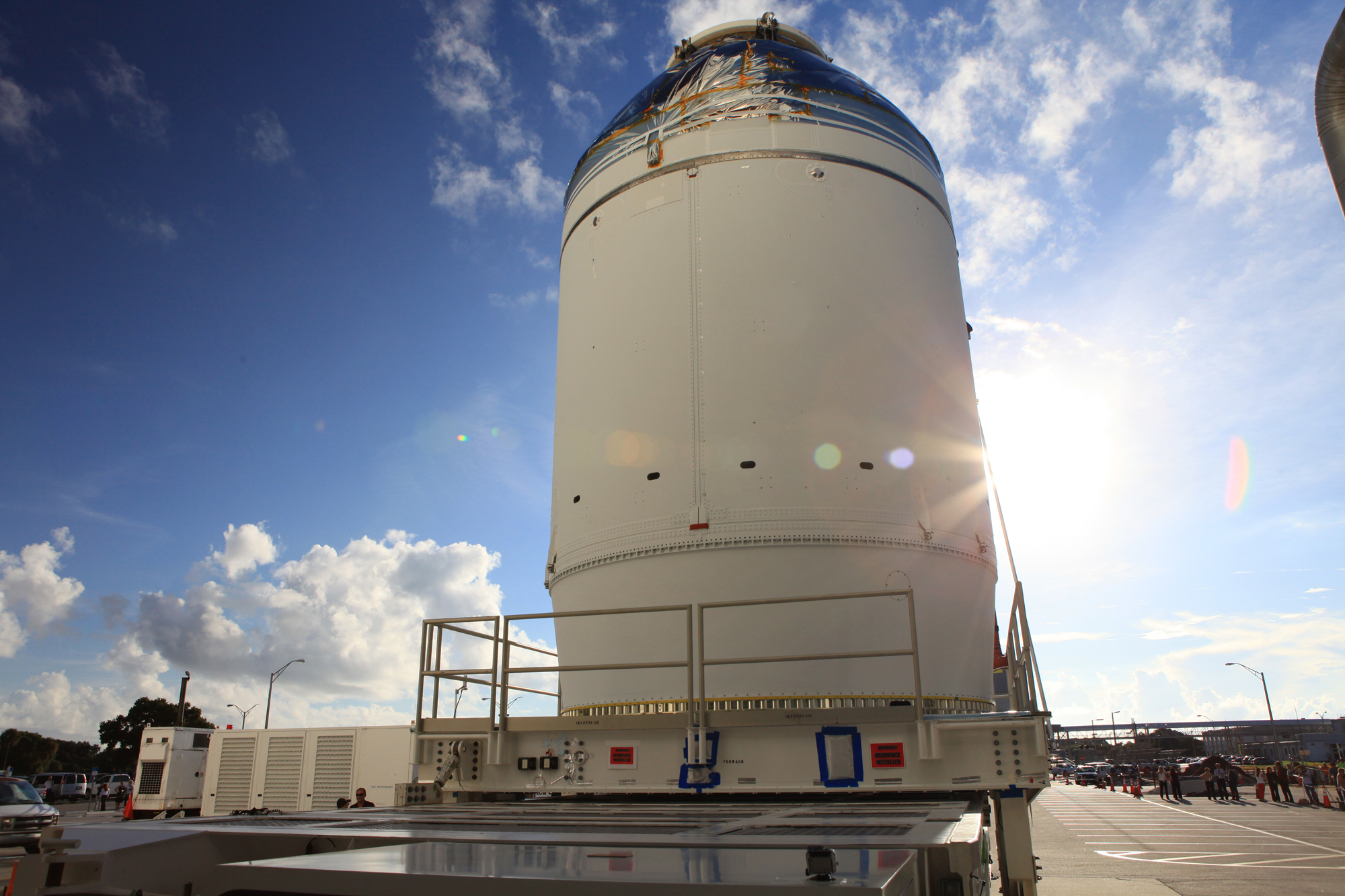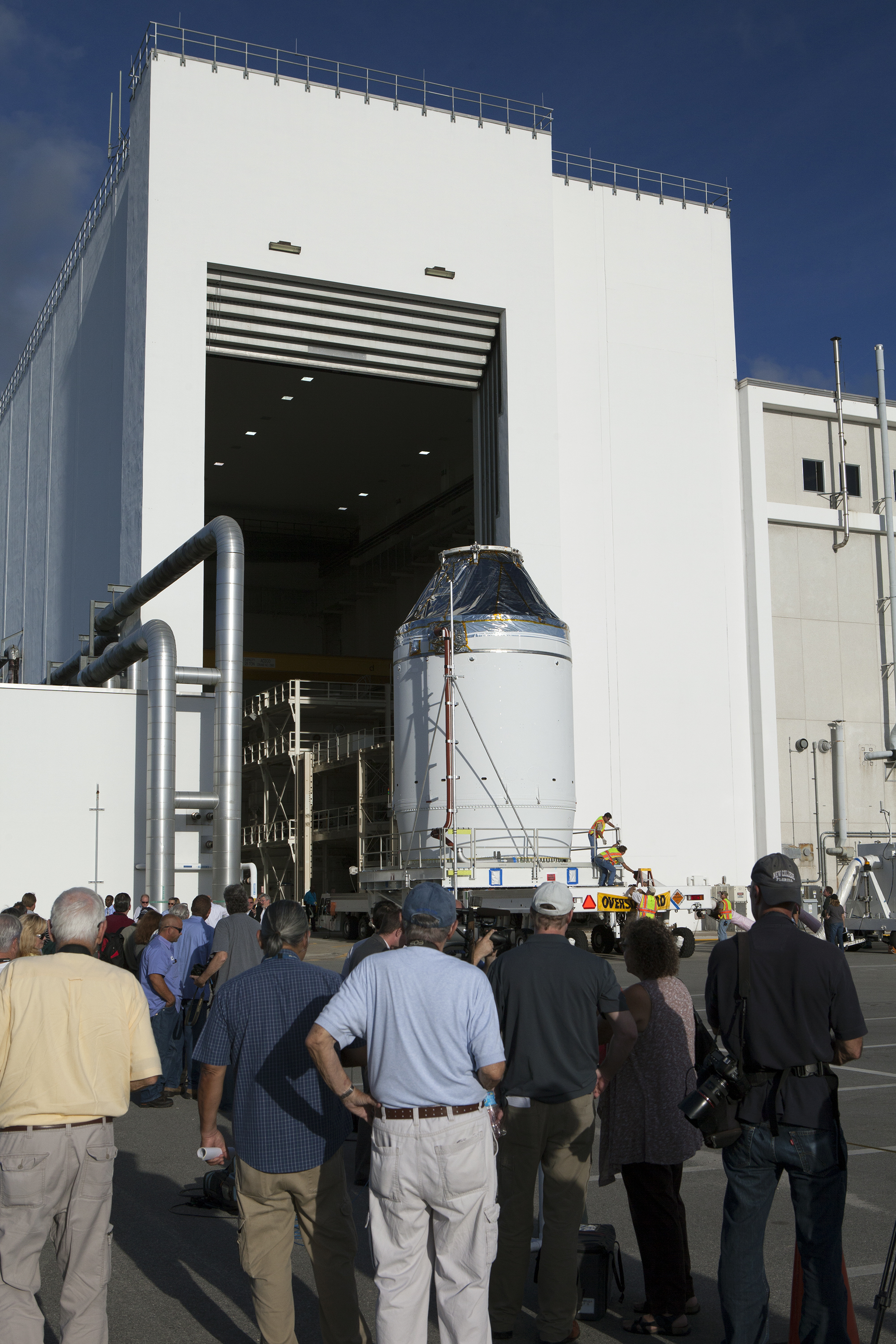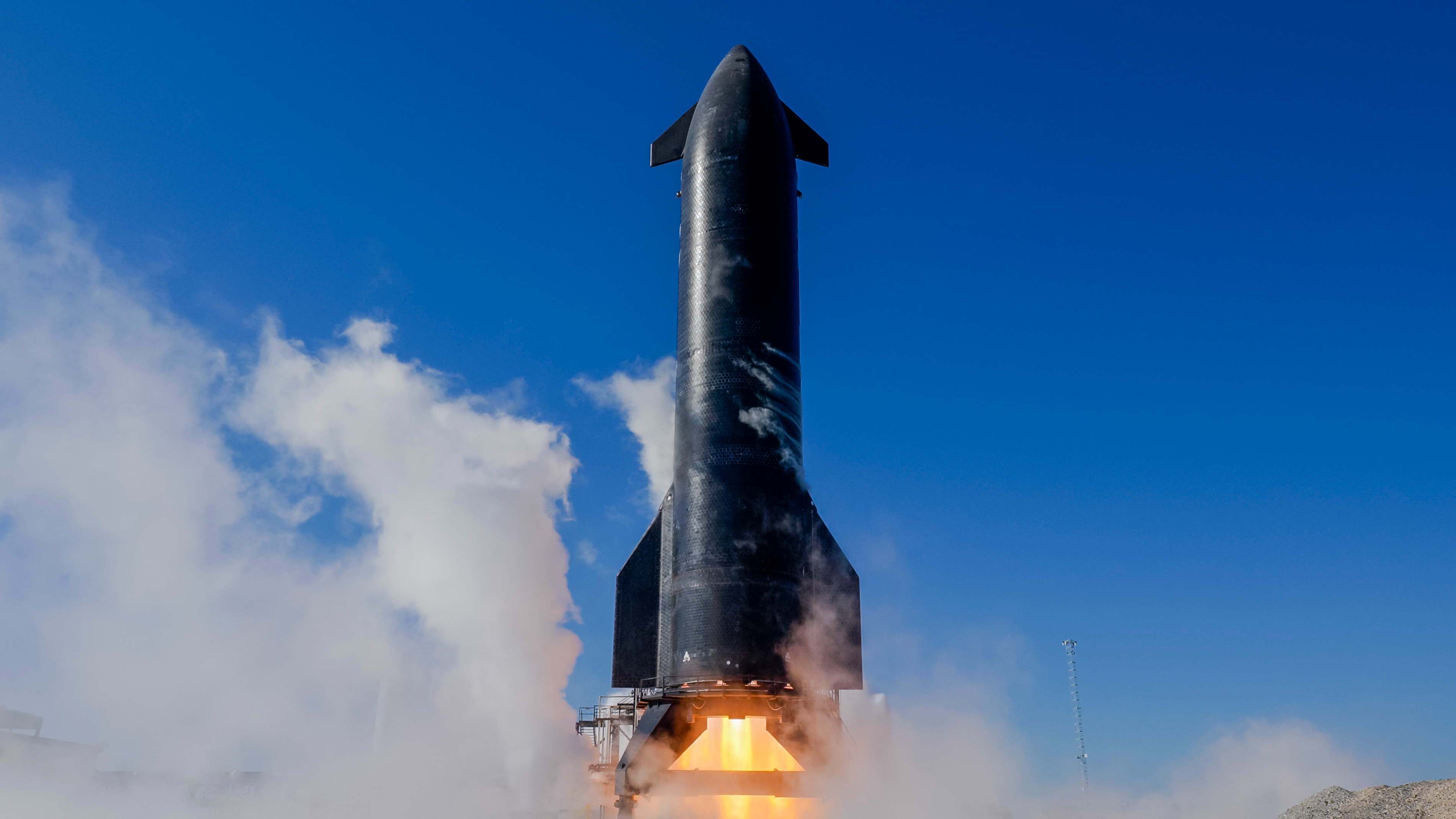NASA Completes 1st Orion Space Capsule for December Test Flight
NASA's first Orion space capsule, designed to carry astronauts to deep-space destinations, is ready for fueling ahead of its debut unmanned test flight in December.
On Thursday (Sept. 11), the space agency's Orion space capsule was transported from an operations and checkout building at the NASA Kennedy Space Center in Florida to a nearby building, where it will be fueled before launching into space in December.
For its December test flight, Orion is supposed to fly an unmanned test about 3,600 miles (5,740 kilometers) into space before returning for a high-speed entry similar to what astronauts faced during the Apollo missions.


"Nothing about building the first of a brand-new space transportation system is easy," Mark Geyer, Orion Program manager said in a statement. "But the crew module is undoubtedly the most complex component that will fly in December. The pressure vessel, the heat shield, parachute system, avionics – piecing all of that together into a working spacecraft is an accomplishment. Seeing it fly in three months is going to be amazing."
The just-completed crew module is the last major piece of the Orion spacecraft system, with the launch abort system finished in December and the service module completed in January. The crew module and service module were joined together in June for testing.
NASA plans to use Orion to send humans out into the solar system, perhaps to an asteroid or Mars. It is distinct from the commercial crew program that is expected to see private space taxis ferry astronauts to and from the International Space Station starting around 2017, should the current timeline hold.
To get into deep space, Orion will use the Space Launch System (SLS), a massive rocket that can kick astronauts out of Earth orbit. The SLS will not be ready for the test flight, however, so NASA will instead send Orion into space on a Delta 4 Heavy rocket.
Breaking space news, the latest updates on rocket launches, skywatching events and more!
Follow Elizabeth Howell @howellspace.Follow us @Spacedotcom, Facebookand Google+. Original article on Space.com.
Join our Space Forums to keep talking space on the latest missions, night sky and more! And if you have a news tip, correction or comment, let us know at: community@space.com.

Elizabeth Howell (she/her), Ph.D., was a staff writer in the spaceflight channel between 2022 and 2024 specializing in Canadian space news. She was contributing writer for Space.com for 10 years from 2012 to 2024. Elizabeth's reporting includes multiple exclusives with the White House, leading world coverage about a lost-and-found space tomato on the International Space Station, witnessing five human spaceflight launches on two continents, flying parabolic, working inside a spacesuit, and participating in a simulated Mars mission. Her latest book, "Why Am I Taller?" (ECW Press, 2022) is co-written with astronaut Dave Williams.
